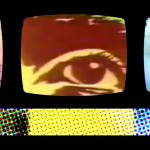BELLADONNA OF SADNESS
BELLADONNA OF SADNESS – Soundtrack Review
By David Bertrand
Even in this overloaded blogosphere universe we live in, where cinematic and musical obscurities from the 60s & 70s seem to wash ashore each day with more frequency than driftwood or the rising tide, 1973’s Belladonna of Sadness stands out like a flaming funeral pyre of potent, unrestrained vision and chilling, funky beauty – the definitive “what the hell is THIS?” flick all us film freaks crave. Defiantly 70’s, explicitly erotic, this Japanese animation stunner is also backed by a fabulously dark and groovy soundtrack from Masahiko free sample pack of cialis Sato. A fine summary of the film’s grim tone and unorthodox, un-Japanese plot accompanies the posts of the soundtrack tunes on YouTube: “Belladonna of Sadness (aka Kanashimi no Beradona, 1973) is loosely based on the 19th-century French literature classic‚ La Sorcière, by historian Jules Michelet. Set in a brutally repressive and exploitative feudal society, it follows the story of Jeanne, a young peasant woman, who in her powerlessness and struggling for emancipation, is gradually driven to ancient superstitions and lascivious satanic practices, only to be accused, raped, tortured, and executed for witchcraft.” Tragically beautiful viagra pharmacy online psychedelic animated witchcraft erotica? Sign me UP!
The swansong project of manga legend Osamu Tezuka’s Mushi Productions studio, known for their highly popular youth-oriented TV series Kimba the White Lion and Astro Boy, Belladonna of Sadness was Mushi’s gamble that failed – eating up the company’s shrinking resources, bombing at the box office, and bankrupting the company. And this desperately assured, going-down-in-flames passion is written all over the finished film, as Belladonna’s unfinished look, crafted by illustrator Kuni Fukai, eschews the anime conventions that Osamu Tezuka more or less invented in the first place, in favour of European-style character designs for tragic lead Jeanne, her lover Jean and their sadistic rivals. It brings to mind Yoshitaka Amano’s character designs for the Final Fantasy video game series in the 80’s and 90’s, as filtered though a prism of psychedelic Art Nouveau revivalism, Austrian painter Gustav Klimt, and Great product!!! Best I have found in several years taking medicines http://www.spectacularoptical.ca/2021/02/secure-places-to-buy-levitra-in-canada-visa/. Our Online Canadian Pharmacy is verified by Pharmacy Checker. the mystical aura of a tarot deck but never, ever, settling into one sure style. Quick, rough’n’dirty ink backgrounds with simple splotches of watercolour will shift on a dime to incredibly intricate and twisted Technicolor ejaculations of surrealism, psychedelic lights, and kaleidoscope acid-trip overload animation, in the style of Vincent Collins (just Google him, it’s worth it!).
Once you’re into the Belladonna groove, you’ll realize that inextricable from the film itself is the dead-cool soundtrack by Masahiko Sato (sometimes alternatively anglicized as “Satoh”), who delivers a rich, moonlit trip of hypnotic psychedelia, warm keys, exotic drums, funk bass licks, sizzling horns, and breathy erotica, all veiled in a dark and seductive dance with oblivion. Sato was living in Italy at the time, which is presumably why – with the exception of the distinctly breathy Japanese female vocals – much of the album would fit like a glove among your Stelvio Cipriani, Ennio Morricone, Fabio Frizzi and Guido & Maurizio de Angelis soundtrack LPs… if only you could find the damn thing!
Sato’s score was pressed to vinyl only once by Italy’s Cinevox label in 1975, under the title of Belladonna (minus the Sadness). This esteemed soundtrack label was riding high at the time on the success of other crossover, funky/prog soundtrack hits, such as Goblin & Giorgio Gaslini’s Profondo Rosso OST, and according to most reviews, Belladonna was recorded with the aid of many “important Italian session musicians”, though as I’m unable to read the Japanese titles of the film (or own a physical copy of the ultra-rare LP), I’m unsure of who’s who.
The song titles are marvelously awesome and inappropriate, unashamed odes to Sato’s current pop-culture obsessions rather than scenes in the film. Opening track is called “Andy Warhol” (?), organ locked into a dark, dreary, descending pattern, a beckoning call to an icy cool Black Mass, driven by booms of rolling kettle drums, before abruptly switching into a swift hi-hat shuffle, with electric harpsichord and funkified bass line, seemingly lifted directly from an Italian cop flick in mid-car chase. What this has to do with Warhol, I have no clue.
All 10 tracks are gems: “Belladonna”, the title theme that opens the film (but not the LP) is sung by Mayumi order viagra no prescription Tachibana; a dreamy invitation to love and hope, a pale light before the tragedy sets in. With its uniquely upbeat pop jams and clanging Church bells, this track, coupled with its refrain at viagra to order the end of side one, is catchy enough to have become a genuine chart hit in Japan, if only the movie had been a success. I find myself humming the refrain of “Jean po Jeannuuu!” (“Jean and Jeanne”), almost as much as Meiko Kaji’s “Urami Bushi” theme from the Female Prisoner #701: Scorpion series.
“Funny Feeling” on side two is a conga, kick-drum & hi-hat groove that straps you in tight but never quite takes off, keeping you real edgy. The horn lines and Fender Rhodes slide in and out of the mix, like isolated speakers sparking to life inside your psyche. Druggy, eerie and sexy, it fits with turn of the decade Miles Davis; say “Pharaoh’s Dance” from Bitches Brew set to the beat of On the Corner. The final track, “Take it Easy”, is a straight-to-the-Moon funky psychedelic jam – intense, aggressive, liberating and manic, a perfect finale, with cymbal swirls darting in and out from every angle, fuzz guitar raging, electronics fluttering on the edge of consciousness than devouring it when the time is right. It is pot-smoke music incarnate. Melting, haunting and soothing.
Discovering goodies like Belladonna of Sadness is what makes the internet so damn special. A DVD of the film was released in 2003 – in Japan only – as part of a box set with Cleopatra and A Thousand And One Nights, two prior erotic animated works from the same director (Eiichi Yamamoto) and production team, but unfortunately not the same composer. These three films make up the entire output of Mushi Production’s Animerama series for adults. No official English or French subtitled versions of Belladonna exist but quality fan-subs are out there. The soundtrack, on the other hand, is hurtingly in need of a re-pressing – perhaps Cinevox, Beat Records, Finder’s Keepers, or Phoenix could be coerced with some pressure? As for now, what we’ve got is the odd original copy popping up on auction sites for more than you can afford, and a YouTube-able vinyl rip. And that’ll have to do.
A big thanks to Frank Labonte for curating a rare screening of Belladonna of Sadness at Blue Sunshine, and introducing a crew of lucky people to this little-seen, little-heard masterpiece of cruelty and beauty.

 November 1, 2011
November 1, 2011 









FYI…coming soon! http://www.cineliciouspics.com/indiewire-belladonna-of-sadness/
10 yearss ago